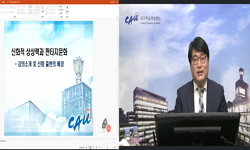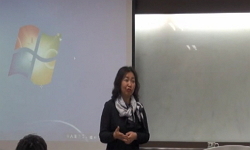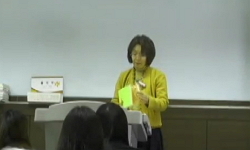The purpose of this article is to shed a new light on the Uni-Korea discourse in the two Koreas’ fantasy novels for children. Historically, most regimes of each country have manipulated and disseminated their cultural policies with national ideologi...
http://chineseinput.net/에서 pinyin(병음)방식으로 중국어를 변환할 수 있습니다.
변환된 중국어를 복사하여 사용하시면 됩니다.
- 中文 을 입력하시려면 zhongwen을 입력하시고 space를누르시면됩니다.
- 北京 을 입력하시려면 beijing을 입력하시고 space를 누르시면 됩니다.
https://www.riss.kr/link?id=A104312388
-
저자
이영미 (경희대학교)
- 발행기관
- 학술지명
- 권호사항
-
발행연도
2015
-
작성언어
Korean
-
주제어
North and South Korea ; Children’s Literature ; Fantasy ; Uni-Korea Discourse ; Kang So-Ch’ŏn ; Photo Studio Having Dream Taken ; Ri Wŏn-U ; The General Ax ; Cultural Similarity ; Cultural Difference ; Cultural Structure of Feeling. ; 남북한 ; 아동문학 ; 판타지 ; 통일담론 ; 강소천 ; 꿈을 찍는 사진관 ; 리원우 ; 도끼장군 ; 문화적 동질성 ; 문화적 이질성 ; 문화감정구조.
-
등재정보
KCI등재
-
자료형태
학술저널
-
수록면
111-128(18쪽)
-
KCI 피인용횟수
3
- DOI식별코드
- 제공처
- 소장기관
-
0
상세조회 -
0
다운로드
부가정보
다국어 초록 (Multilingual Abstract)
The purpose of this article is to shed a new light on the Uni-Korea discourse in the two Koreas’ fantasy novels for children. Historically, most regimes of each country have manipulated and disseminated their cultural policies with national ideological philosophy into the mandatory educational system. The system often implements these policies via literary works in the textbook, which blossoms the feelings of allegiance in the fantasy of children’s literary field. Fantasy novels for children generally has sparked the strong patriotism as political ideology between people. In the two Koreas in 1954 after the armistice of the Korean War, there were published a few seminal fantasies for children, especially Kang So-Chŏn’s Photo Studio Having Dream Taken in South Korea and Ri Wŏn-U’s The General Ax in North Korea. Showing distinct ideological values after the armistice of the Korean War, their two children’s literary works have so far led and disseminated the fantasy of different national feelings and goals for Uni-Korea in different systems. They basically have a similar plot of literature in the conformity of real world and unreal world, whereas they also have different directions for Uni-Korea. While the fantasy in South Korea focuses on the inner integration of longing for Uni-Korea with reminiscence, the other in North Korea expresses the historical resistance against the outside world, like Japan and U. S. A. as a invader, for Uni-Korea. I argue that this finding of similarities and differences in these fantasy novels for children re-illuminates meaningfully the cultural structure of feeling veiled between the two Koreas, which would be the underpinning of Uni-Korea in the future.
국문 초록 (Abstract)
본고는 남북한의 대표적인 아동문학작가 강소천과 리원우의 작품에 나타난 문학적 세계관을 통해 남북한 통일담론의 차이를 포착하여 현재 남북한 문화감정구조의 동질성과 이질성에 대...
본고는 남북한의 대표적인 아동문학작가 강소천과 리원우의 작품에 나타난 문학적 세계관을 통해 남북한 통일담론의 차이를 포착하여 현재 남북한 문화감정구조의 동질성과 이질성에 대한 역사적 유래를 확인함과 동시에 향후 통일 시대 문화적 통합의 가능성을 찾아보고자 했다. 휴전 다음 해인 1954년 남한과 북한에서 출판된 두 작품, 즉 강소천의 <꿈을 찍는 사진관>과 리원우의 <도끼장군>이 현재 남북한의 통일담론의 동질성/이질성을 확인할 수 있는 가장 적절한 아동문학 판타지 작품으로 판단되어 본고의 분석텍스트로 선택하였다. 휴전 이래 지금까지 60여 년 동안 각 체제의 정치철학적 세계관이 추진해 나간 통일론의 문화인식론적 방향은, 남한이 내부 치유를 통한 민족통일론으로, 북한이 외세 대항을 통한 민족통일론으로 진행되었던 바, 그 분기(分岐)된 문화적 원형의 감정구조가 바로 이 두 작품의 비교 분석을 통해 선명하게 확인될 수 있었다. 남북이 마음으로 화합하면 통일이 될 수 있다는 그리움과 기억의 내향형 판타지를 통해 통일의식을 드러낸 남한, 그리고 외세에 대항하는 힘을 같이 길러야 통일이 될 수 있다는 외향형 판타지를 지속적으로 선동한 북한의 통일의식은, 1954년 이 두 아동문학 판타지 작품들에서 포착되는 것처럼, 휴전 직후부터 분기되어 강하게 서로간의 차이점을 노정하여 왔던 것이다. 남한의 통일관과 북한의 통일관이 역사적으로 서로 다른 모습으로 성장해온 문화적 기원이 이 연구에서 확인됨으로써 향후 남북한이 그 정치사상적 배경의 차이를 상호 이해하고 통합의 아젠다를 구체적으로 구상해 나아가는 데 중요한 기반이 마련될 수 있을 것이라 기대한다.
참고문헌 (Reference)
1 캐스린 흄, "환상과 미메시스" 푸른나무 2000
2 이재철, "한국현대아동문학사" 일지사 1978
3 장영미, "전후 아동소설 연구 -『그리운 메아리』와『메아리 소년』을 중심으로" 한국아동문학학회 (22) : 205-229, 2012
4 이상현, "아동문학강의" 일지사 1991
5 이영미, "북한 아동문학과 교육 연구" 한국문학이론과비평학회 10 (10): 225-260, 2006
6 이영미, "북한 문학교육의 이론과 실제" 한국문화사 2012
7 이영미, "리원우의 <도끼장군>에 대한 연구" 국제한인문학회 1 (1): 250-290, 2013
8 원종찬, "강소천 소고—해방기 북한체제에서 발표된 동화와 동시" 한국아동청소년문학학회 (13) : 7-36, 2013
9 이종호, "강소천 동화의 서사 전략 연구- 단편 동화를 중심으로 -" 동화와번역연구소 (12) : 187-185, 2006
10 공선희, "강소천 동화 연구" 한국교원대학교 1996
1 캐스린 흄, "환상과 미메시스" 푸른나무 2000
2 이재철, "한국현대아동문학사" 일지사 1978
3 장영미, "전후 아동소설 연구 -『그리운 메아리』와『메아리 소년』을 중심으로" 한국아동문학학회 (22) : 205-229, 2012
4 이상현, "아동문학강의" 일지사 1991
5 이영미, "북한 아동문학과 교육 연구" 한국문학이론과비평학회 10 (10): 225-260, 2006
6 이영미, "북한 문학교육의 이론과 실제" 한국문화사 2012
7 이영미, "리원우의 <도끼장군>에 대한 연구" 국제한인문학회 1 (1): 250-290, 2013
8 원종찬, "강소천 소고—해방기 북한체제에서 발표된 동화와 동시" 한국아동청소년문학학회 (13) : 7-36, 2013
9 이종호, "강소천 동화의 서사 전략 연구- 단편 동화를 중심으로 -" 동화와번역연구소 (12) : 187-185, 2006
10 공선희, "강소천 동화 연구" 한국교원대학교 1996
11 박영기, "<꿈을 찍는 사진관> 소론" 22 : 2005
12 이영미, "1950년대 북한 아동문학교양장(場) 연구 —조선작가동맹 중앙위원회 기관지 『아동문학』 을 중심으로" 한국언어문학회 (66) : 329-358, 2008
동일학술지(권/호) 다른 논문
-
21세기 폭력의 패러다임과 폭력․비폭력의 경계:발리바르, 데리다, 아감벤의 폭력론을 중심으로
- 사단법인 한국평화연구학회
- 이문영
- 2015
- KCI등재
-
- 사단법인 한국평화연구학회
- 김정수
- 2015
- KCI등재
-
민주시민 양성을 위한 청소년 청렴교육: 국내외 운영 사례 검토와 정책적 함의
- 사단법인 한국평화연구학회
- 고경민
- 2015
- KCI등재
-
- 사단법인 한국평화연구학회
- 이길연
- 2015
- KCI등재
분석정보
인용정보 인용지수 설명보기
학술지 이력
| 연월일 | 이력구분 | 이력상세 | 등재구분 |
|---|---|---|---|
| 2026 | 평가예정 | 재인증평가 신청대상 (재인증) | |
| 2020-01-01 | 평가 | 등재학술지 유지 (재인증) |  |
| 2017-01-01 | 평가 | 등재학술지 유지 (계속평가) |  |
| 2013-01-01 | 평가 | 등재학술지 유지 (등재유지) |  |
| 2011-03-15 | 학회명변경 | 한글명 : 세계평화통일학회 -> 사단법인 한국평화연구학회영문명 : The Society of world Peace and Unification -> The Korean Association of Peace Studies |  |
| 2010-01-01 | 평가 | 등재학술지 선정 (등재후보2차) |  |
| 2009-01-01 | 평가 | 등재후보 1차 PASS (등재후보1차) |  |
| 2007-01-01 | 평가 | 등재후보학술지 선정 (신규평가) |  |
학술지 인용정보
| 기준연도 | WOS-KCI 통합IF(2년) | KCIF(2년) | KCIF(3년) |
|---|---|---|---|
| 2016 | 0.58 | 0.58 | 0.56 |
| KCIF(4년) | KCIF(5년) | 중심성지수(3년) | 즉시성지수 |
| 0.54 | 0.48 | 0.882 | 0.06 |




 KCI
KCI







